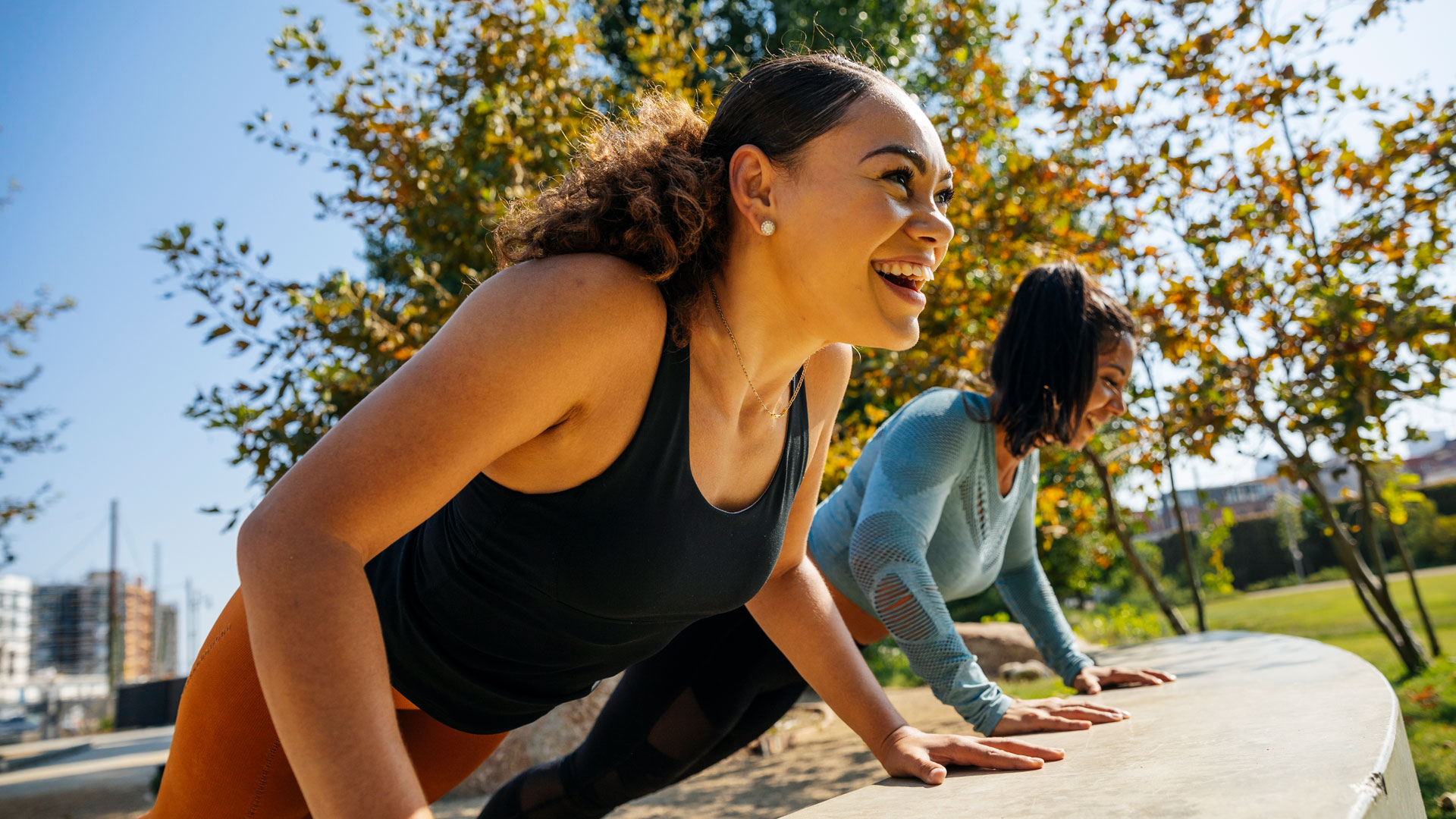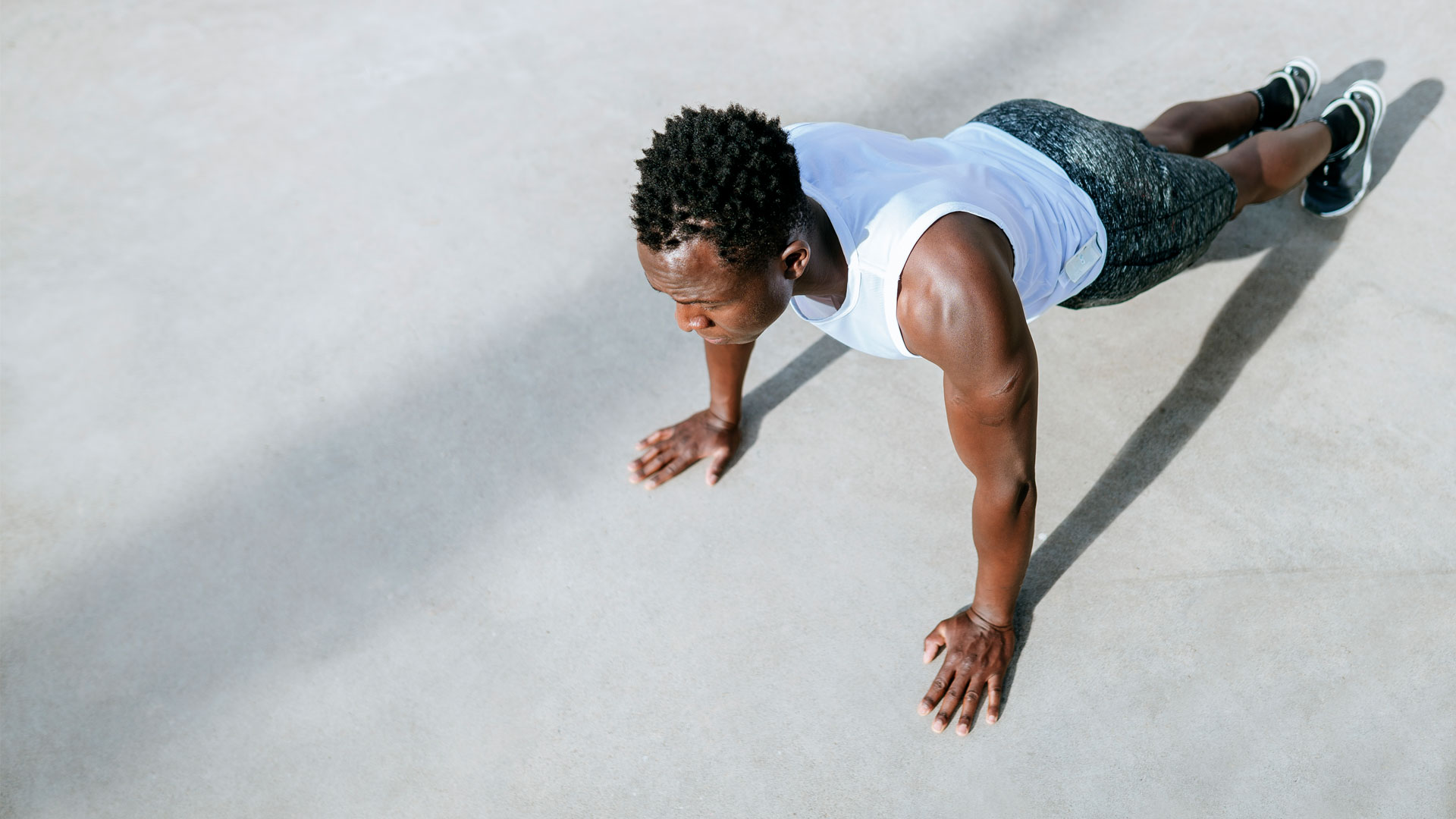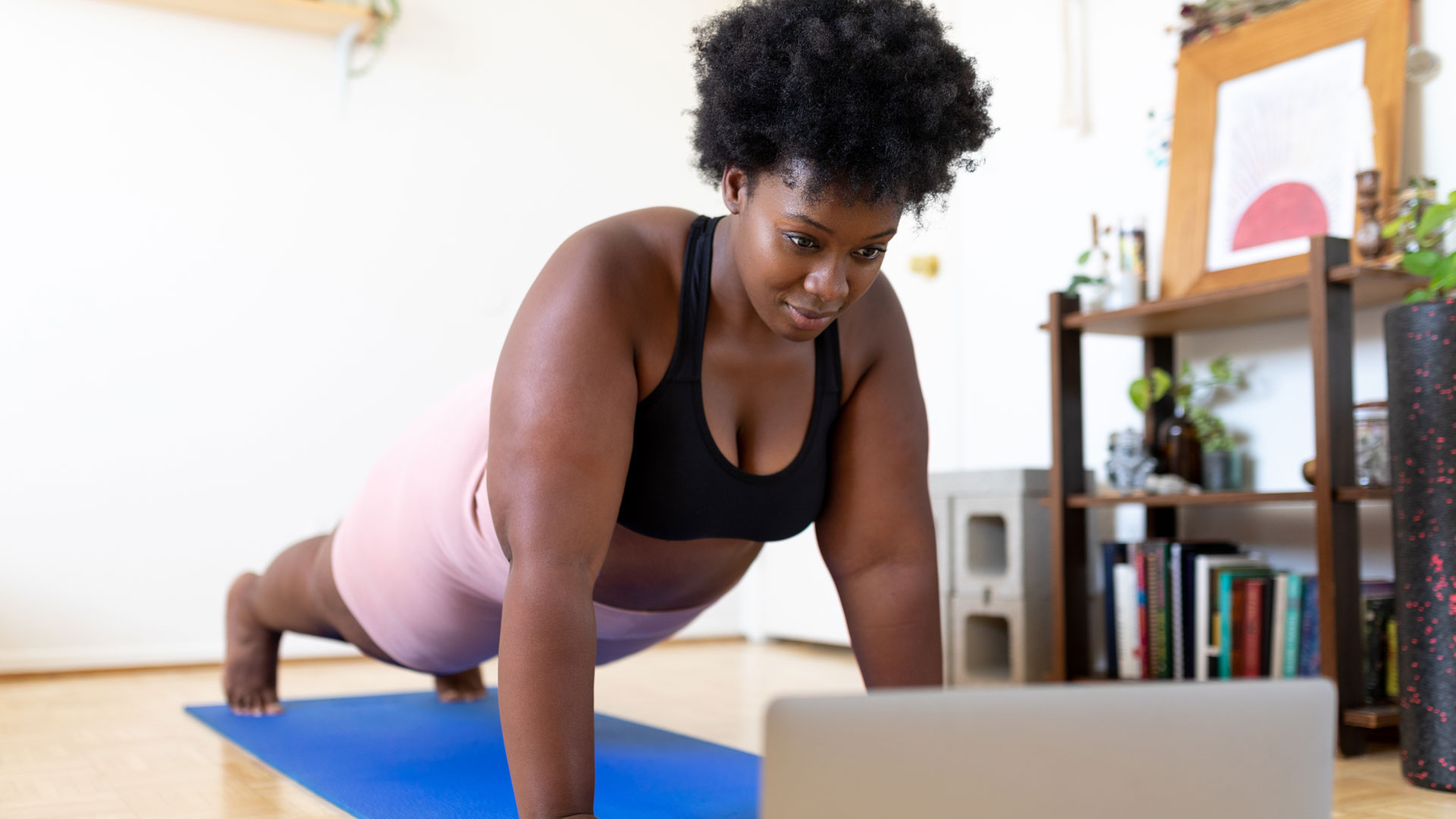What muscles do push-ups work?
What muscles do push-ups work? And should we be doing this move at all?


Wondering; what muscles do push-ups work? We’ve got you covered. While everyone from the serious gym goer to casual exerciser has probably heard of a push-up, many of us are unaware of the muscles involved in the movement. Often referred to as a chest exercise, the push-up is categorized as a compound bodyweight exercise, which targets several upper body muscles.
While traditional push-ups are known for building upper body strength, using the proper form can also strengthen the core by engaging the abdominal muscles. As a result, push-ups are a fast and effective exercise for building body strength, especially when used in conjunction with a strength training program using the best adjustable dumbbells.
If you’re new to the exercise, check out how to do a push-up but to find out exactly what’s going on in your body, keep reading.

What are the benefits of push-ups?
Fitness coach and tactical trainer Farren Morgan said, “Push-ups are an excellent exercise to incorporate into your daily workouts if you’re looking to improve your strength at a rapid pace. One of the major benefits of doing push-ups is that they can be done anywhere, don’t require any equipment, and can be used to target specific muscle groups or can be adjusted to meet your physical capabilities.”
“Push-ups are a great exercise tool for weight loss and by doing them regularly you’d also be strengthening your lower back and shoulders which would decrease the chances of sustaining an injury while simultaneously improving your flexibility, balance, and posture. Push-ups also greatly contribute to the health of your cardiovascular system. By increasing your activity your blood circulation and oxygen capacity increase which also strengthens the heart and lungs.”
“Studies have shown that men who regularly conduct 40+ push-ups were 96% less likely to develop cardiovascular problems than those that struggled to do 10 push-ups. This shows that push-ups can also contribute to the state of your health as you grow older which is why it’s important to regularly incorporate push-ups into your daily routine.”
Research suggests that adding strength exercises like push-ups to an aerobic exercise program can increase energy metabolism, resulting in more calories burned. This could lead to benefits like increased fat loss. Therefore, adding push-ups to your workout routine alongside a suitable diet can lead to long-term improvements in body composition.
Start your week with achievable workout ideas, health tips and wellbeing advice in your inbox.
It’s worth noting that if you have any injury or pain in the chest or shoulder, you should consult with a certified trainer or physical therapist to ask for guidelines and modification options to the push-up to prevent re-injury.
Which muscles do push-ups work?
Morgan says, “While often referred to as a chest exercise, the other muscles that push-ups work should not be overlooked. In fact, push-ups are categorized as compound bodyweight exercises, meaning that they target several muscles of the upper body. Push-ups are widely known to be beneficial for the upper body because they work your triceps, shoulders, and pectoral muscles.”

The muscles in the upper body do most of the work when a person does push-ups. These include:
- Muscles in the chest, including the pectoralis major and pectoralis minor
- Muscles in the shoulder, including the deltoid major and deltoid minor
- Upper and middle back muscles, including the latissimus dorsi, rhomboids, and trapeze muscles
- Biceps, the muscles at the front of the upper arm
- Triceps, the muscles at the back of the upper arm
- Serratus anterior, which sits on the side of the chest beneath the upper arm
Morgan continues, “Though the upper body effects are significantly greater, conducting push-ups regularly with proper form will also strengthen your core. The last area of the body push-ups play a major part in is the lower back that works in conjunction with your core to keep your body aligned and strong.”
Push-up tips for improving your form

While push-ups are a great upper-body exercise, poor form can make them less effective and may lead to injury. Morgan says, “There are many ways to optimize the benefits you can receive from regularly performing push-ups but all of these factors tie back to maintaining proper form, which is crucial to the results that would be achieved from your workout.”
- Start on all-fours, with your hands slightly wider than your shoulders and knees on the ground. You should tilt your head slightly, so your ears are parallel to your shoulders.
- Straighten your legs out and back, one at a time. Your feet should be hip-width apart and parallel to one another. You should relax your lower back, and your hips need to align with your shoulders.
- Slowly bend your elbows backward, making a 45-degree angle with your torso, lowering your chest until it almost touches the floor while keeping the muscles of your core tight and your back as flat as possible.
- Pause for a moment, then push your body back into a high plank position, maintaining a flat back and engaging your core, front deltoids, triceps, chest, and forearms.
“Once you feel confident with your form and you feel comfortable conducting push-ups whilst maintaining your form, you can enhance the benefits push-ups can provide by tightening your glutes and abs as you engage your core. This will maximize the impact of your push-ups and help you see results faster.”
Looking for more workout ideas, perfect your form with these tips on how to do a plank.
Catherine is a freelance journalist writing across titles such as Verywell Health, Healthline, The Daily Telegraph, Refinery29, Elle, and Vogue. She specializes in content covering health, fitness, wellness, and culture.
A once reluctant runner, Catherine has competed in 30 running events in the past five years and looks forward to one day running the London Marathon.
